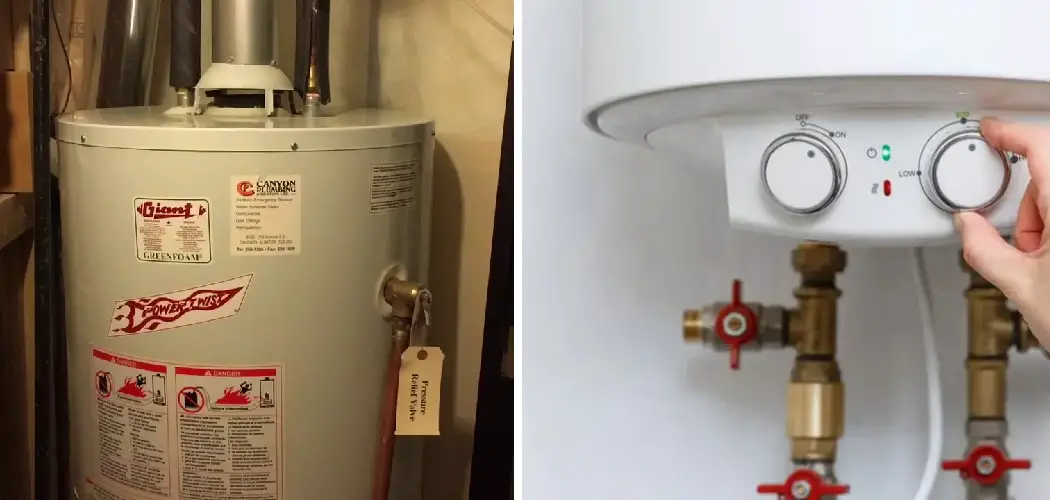Hot water is an essential commodity in every household, and the hot water heater is responsible for providing this crucial resource. However, over time, your hot water heater may start to run out of hot water quicker than usual or produce lukewarm water instead of piping hot.
This usually happens when there isn’t enough water in the tank due to heavy usage or sediment buildup.
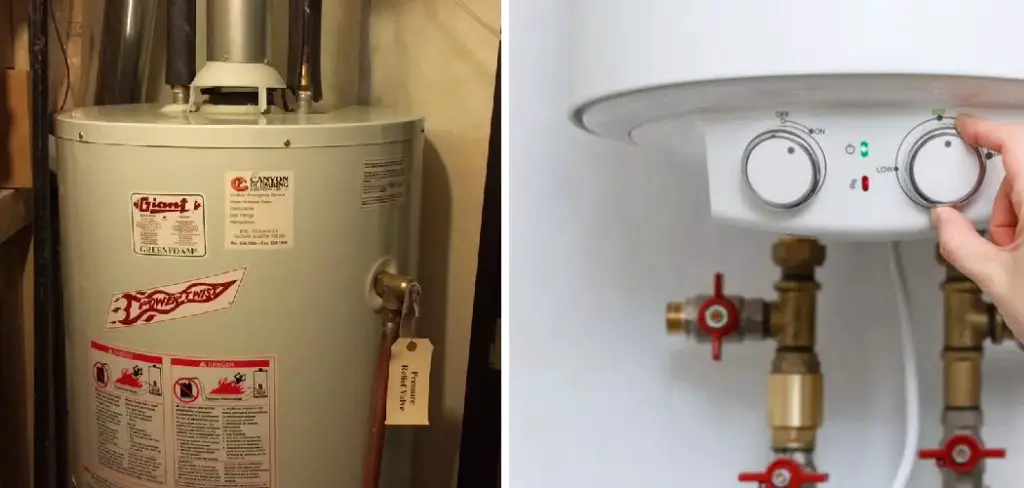
To continue enjoying hot water in your home, you will need to refill your hot water heater. Refilling a hot water heater is a relatively simple process that can be done by following a few steps. In this guide, we will discuss how to refill hot water heater.
Necessary Items
Before we get into the steps of refilling a hot water heater, it’s essential to gather all the necessary items. These include:
- A hose long enough to reach from your faucet to the hot water heater.
- A screwdriver or wrench (depending on your hot water heater’s type).
- A bucket or large container.
- Towels for cleaning up any spills.
- A garden hose adapter (if your hot water heater does not have a drain valve).
12 Steps on How to Refill Hot Water Heater
Step 1: Turn off the Power Supply
Before starting any work on your hot water heater, it’s crucial to turn off the power supply. This is to avoid any accidents or shocks while refilling the heater. And, if you have a gas-powered hot water heater, make sure to turn off the gas supply as well.
Step 2: Determine Your Hot Water Heater’s Type
There are two common types of hot water heaters – tank and tankless. Knowing your hot water heater’s type will help you determine where to refill it from and how much water is needed. Also, check the manufacturer’s manual for any specific instructions.
Step 3: Locate the Drain Valve (for Tank Heaters)
For tank hot water heaters, locate the drain valve at the bottom of the tank. This is where you will release the old water and refill it with fresh water. As mentioned earlier, if you do not have a drain valve, you will need to use a garden hose adapter.
Step 4: Turn off Cold Water Supply
Locate the cold water supply pipe that connects to your hot water heater and turn it off. This ensures no new water enters the tank while draining the old one. However, if you are using a garden hose adapter, skip this step.
Step 5: Drain the Old Water
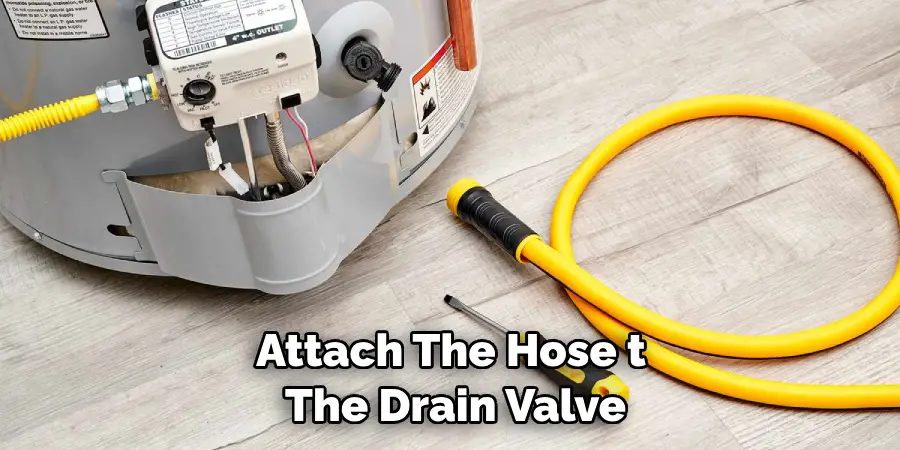
Attach the hose to the drain valve or garden hose adapter and place the other end in your bucket or large container. Slowly open the valve/adapter and allow all the old water to drain out. Be cautious of any hot water as it may cause burns.
Step 6: Flush the Tank (Optional)
If your hot water heater has been producing lukewarm or discolored water, you may choose to flush the tank before refilling it. This involves filling and draining the tank a few times to remove any sediment buildup.
Step 7: Close Drain Valve/Adapter
Once all the old water has drained out, close the drain valve or remove the garden hose adapter. While removing the hose, make sure to keep it above the water level to prevent any backflow.
Step 8: Turn on Cold Water Supply
For tank hot water heaters, turn on the cold water supply once again. This will start filling the tank with fresh water. If you are using a garden hose adapter, you will need to attach it to another faucet and turn on the water supply.
Step 9: Open the Pressure Relief Valve
While refilling your hot water heater, you will need to release any trapped air. This can be done by opening the pressure relief valve located at the top of the tank. Let it stay open until a steady stream of water comes out.
Step 10: Continue Filling Until Water Runs Clear
Keep an eye on the water coming out of the pressure relief valve. Once it turns from cloudy to clear, this indicates that all the air has been released, and the tank is full. Keep the valve open for a few more minutes to ensure all air is released.
Step 11: Close the Pressure Relief Valve and Cold Water Supply
Close the pressure relief valve and turn off the cold water supply. This indicates that your hot water heater has been successfully refilled with fresh water. Even if you did not do the optional tank flush, it’s still a good idea to open and close the pressure relief valve to release any remaining air.
Step 12: Turn on the Power Supply
Finally, turn on the power supply for your hot water heater. If you have a gas-powered heater, remember to also turn on the gas supply. Once everything is turned back on, allow some time for the water to heat up and reach the desired temperature.
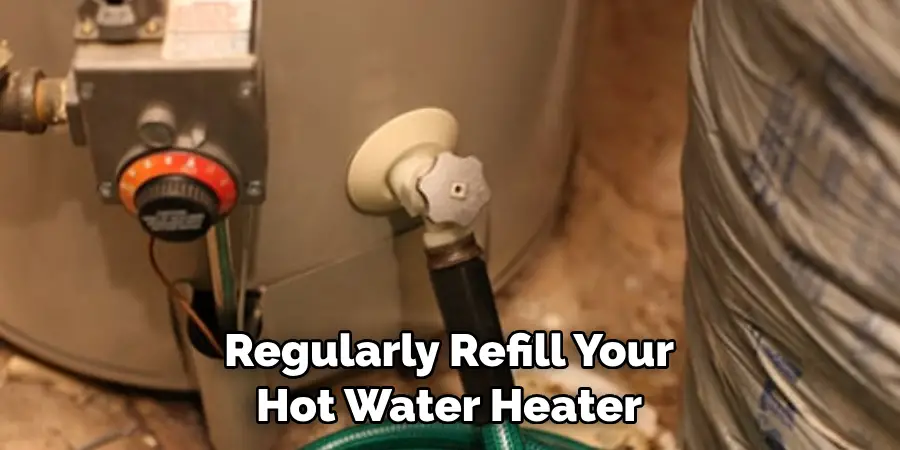
Refilling a hot water heater is a simple process that can be done by following these 12 steps. It’s important to regularly refill your hot water heater to ensure an adequate supply of hot water in your home. Additionally, performing routine maintenance, such as flushing the tank, can extend the lifespan of your hot water heater.
By following these steps and properly caring for your hot water heater, you can continue enjoying hot showers and clean dishes without any interruptions. So, make sure to schedule regular refills and maintenance for your hot water heater to keep it running efficiently.
9 Safety Measures While Refilling a Hot Water Heater
While refilling your hot water heater, it’s essential to take safety precautions. Here are nine measures you should follow:
1) Always Wear Protective Gear
To protect yourself from any potential accidents, make sure to wear gloves and safety goggles while refilling your hot water heater. And, if you are flushing the tank, wear a face mask to avoid inhaling any sediment particles.
2) Be Careful of Hot Water
The water draining from your hot water heater will be extremely hot and can cause burns. Make sure to wear gloves while handling any parts of the heater or draining the water. And, keep children and pets away during this process.
3) Turn off the Power Supply
Before starting any work on your hot water heater, make sure to turn off the power supply. This includes both electricity and gas supplies. Failure to do so can result in electric shocks or gas leaks. So, take the necessary precautions.
4) Check for Leaks
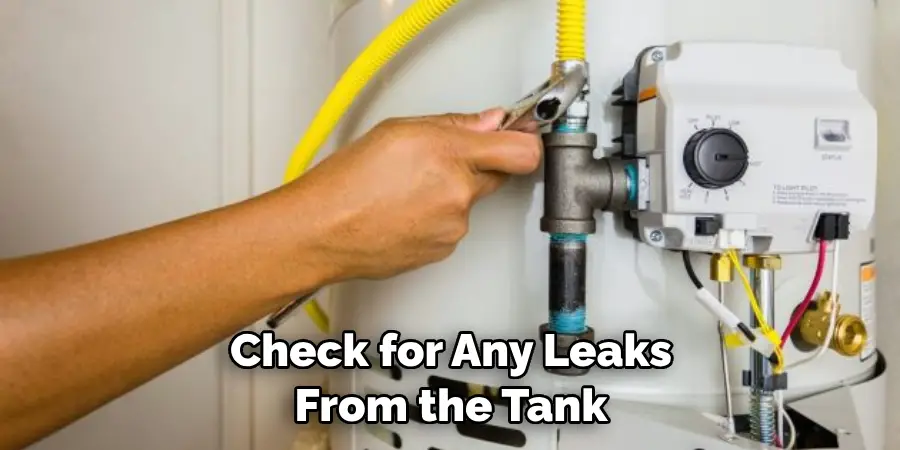
Before refilling your hot water heater, check for any leaks from the tank or pipes. If you notice any leaks, make sure to fix them before proceeding with the refill. This will prevent wasting water and potential damage to your property.
5) Use a Step Stool or Ladder
If your hot water heater is located in a high place, use a step stool or ladder to safely access it. Do not attempt to climb on top of the tank, as this can be dangerous and cause accidents.
6) Keep Emergency Numbers Handy
In case of any accidents or emergencies, keep emergency numbers handy. This includes the number for your local fire department and utility company. It’s always better to be prepared in case the unexpected happens.
7) Follow the Manufacturer’s Instructions
Always refer to your hot water heater’s manual for specific instructions and safety precautions. Each heater may have slightly different refill procedures, so make sure to follow the manufacturer’s guidelines for optimal safety.
8) Properly Dispose of Old Water
Once you have drained the old water from your hot water heater, make sure to dispose of it properly. Do not pour it down the drain, as it may contain sediment and other minerals that can clog your pipes.
9) Schedule Regular Maintenance Checks
To ensure the safety and efficiency of your hot water heater, make sure to schedule regular maintenance checks with a professional. They can identify any potential issues and perform necessary repairs to keep your heater running smoothly.
By following these safety measures on how to refill hot water heater, you can ensure a safe and successful hot water heater refill. Remember to always prioritize safety while performing any maintenance tasks on your hot water heater. So, make sure to take the necessary precautions and follow these steps for a hassle-free refill process.
8 Things to Avoid While Refilling a Hot Water Heater
While there are necessary steps to follow when refilling a hot water heater, there are also certain things you should avoid. Here are eight things to keep in mind:
1) Do Not Turn on the Power Supply Too Soon
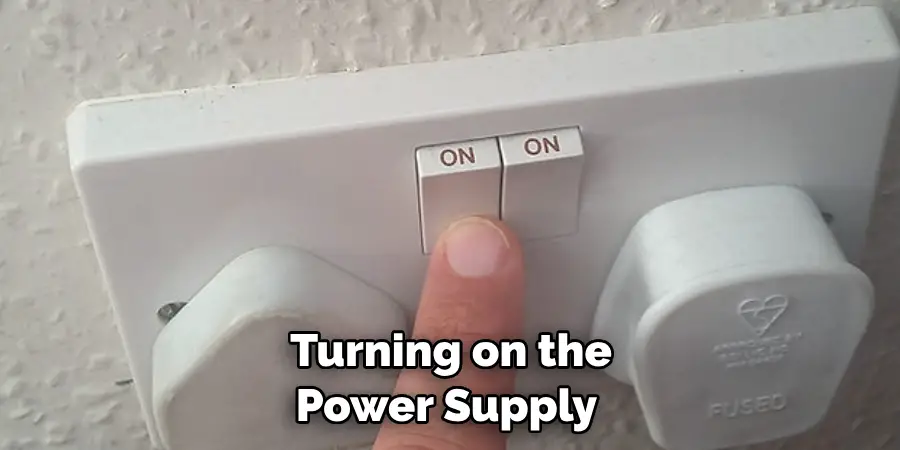
It’s crucial to wait until the tank is full before turning on the power supply for your hot water heater. Turning it on too soon can cause damage to the heating elements, resulting in costly repairs. And, if you have a gas-powered heater, it can also lead to dangerous gas leaks.
2) Avoid Overfilling the Tank
While it’s essential to fill your hot water heater with enough water, be careful not to overfill it. This can cause the pressure relief valve to malfunction or leak. Follow the recommended capacity for your specific heater model.
3) Don’t Forget to Close the Pressure Relief Valve
After refilling your hot water heater, make sure to close the pressure relief valve. Leaving it open can cause water to continuously leak and result in low water pressure. If you notice water dripping from the valve, make sure to tighten it properly.
4) Do Not Use Excessive Force
When opening and closing valves or fittings on your hot water heater, avoid using excessive force. This can cause damage to the parts and result in leaks or malfunctions. If you encounter resistance, stop and re-evaluate your approach.
5) Avoid DIY Repairs
While it may be tempting to try and fix any issues with your hot water heater on your own, it’s best to leave repairs to the professionals. Attempting DIY repairs can lead to further damage or safety hazards.
6) Don’t Neglect Routine Maintenance
Regular maintenance is crucial for keeping your hot water heater running efficiently and safely. Neglecting routine maintenance can result in costly repairs or even the need for a full replacement. So, make sure to stay on top of your maintenance schedule.
7) Avoid Using Harsh Chemicals

When draining and flushing the tank, avoid using harsh chemicals to clean it. These chemicals can be harmful if they come into contact with your skin or eyes, and they can also damage the tank’s interior. Stick to using mild soap and warm water for cleaning.
8) Don’t Ignore Strange Noises or Smells
If you notice any unusual noises or smells coming from your hot water heater, do not ignore them. These could be signs of potential issues that need to be addressed by a professional. Ignoring these warning signs can result in more significant problems down the line.
By avoiding these things, you can ensure a smoother and safer process when refilling your hot water heater. Remember to always prioritize safety and consult a professional if you encounter any issues or concerns with your hot water heater. So, follow these tips and enjoy a fully functional and safe hot water heater for years to come!
8 Additional Tips for Maintaining Your Hot Water Heater
Apart from following safety measures and avoiding potential pitfalls when refilling your hot water heater, regular maintenance is also essential for its longevity. Here are eight additional tips to help you maintain your hot water heater:
1) Check the Anode Rod Regularly
The anode rod helps prevent corrosion in your hot water heater tank. However, it can wear out over time and will need to be replaced. Make sure to check it at least once a year and replace it if necessary.
2) Keep the Area Around Your Hot Water Heater Clear
Make sure to keep the area around your hot water heater clear of any clutter or debris. This will allow proper ventilation and prevent any potential fire hazards. Just a few inches of space around the heater is enough.
3) Insulate Your Pipes
Insulating your hot water pipes can help reduce heat loss and save energy. This will also prevent the pipes from freezing during colder months. Make sure to use proper insulation materials and consult a professional if needed.
4) Adjust the Temperature Setting
Lowering your hot water heater’s temperature setting can help save energy and prevent scalding accidents. The recommended temperature is between 120-140 degrees Fahrenheit. Some newer models come with pre-set temperature settings for convenience.

5) Clean the Tank Annually
Flushing your hot water heater tank once a year can help remove sediment and mineral buildup, which can affect efficiency and potentially cause damage. Consult a professional or follow manufacturer instructions for proper cleaning methods.
6) Check for Leaks Regularly
Make sure to check for any leaks or drips from your hot water heater regularly. Even small leaks can lead to larger issues and should be addressed promptly. But, if you notice a significant leak or burst tank, turn off the water supply and call a professional immediately.
7) Be Mindful of Water Usage
Conserving water not only helps the environment but also prolongs the life of your hot water heater. Encourage your household members to be mindful of their water usage and make small changes like taking shorter showers or fixing leaky faucets.
8) Schedule Professional Inspections
It’s important to have a professional inspect your hot water heater at least once every two years. They can identify any potential issues and provide maintenance recommendations to keep your heater running efficiently. This will also help extend the lifespan of your hot water heater.
Following these additional tips on how to refill hot water heater, along with proper refilling methods, will help ensure that your hot water heater stays in good condition for years to come. So, make sure to prioritize regular maintenance and safety precautions to keep your household supplied with hot water at all times.
Frequently Asked Questions
How Often Should I Refill My Hot Water Heater?
Draining and refilling your hot water heater once a year is recommended to remove sediment buildup and maintain its efficiency. However, if you notice any issues or changes in performance, it’s best to consult a professional for advice.
Is It Safe to Refill My Hot Water Heater Myself?
While DIY refilling may seem like a cost-effective option, it’s always best to consult a professional for safety and efficiency reasons. They can ensure that the process is done correctly and identify any potential issues that may need to be addressed.

Can I Use My Hot Water Heater Immediately After Refilling It?
It’s best to give your hot water heater some time to heat the water after refilling it. Depending on the size of your tank, this can take anywhere from a few hours to a full day. Consult manufacturer instructions for recommended waiting times.
How Long Can I Expect My Hot Water Heater to Last?
The average lifespan of a hot water heater is approximately 8-12 years. Regular maintenance and proper usage can help extend its lifespan, but it’s important to keep an eye out for any warning signs of potential issues as the heater reaches its older age.
What Should I Do If I Encounter Any Issues When Refilling My Hot Water Heater?
If you encounter any issues or concerns when refilling your hot water heater, it’s best to consult a professional for advice. They can help identify the problem and provide solutions to ensure the safety and efficiency of your hot water heater.
So, don’t hesitate to seek professional help if needed. Remember, safety should always be the top priority when dealing with household appliances. Stay informed and take proper precautions to ensure a smooth and safe experience when refilling your hot water heater.
Conclusion
Maintaining a hot water heater may seem like a daunting task, but with the right knowledge of how to refill hot water heater and precautions, it can be a simple and hassle-free process.
Regular maintenance and safety measures are crucial for the longevity of your hot water heater, so make sure to follow these tips and consult a professional if needed. By taking proper care of your hot water heater, you can enjoy a consistent supply of hot water for years to come. So, stay informed and prioritize safety to keep your household running smoothly.

